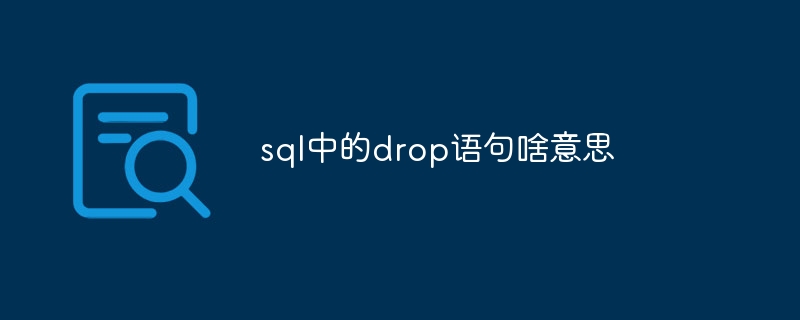What does the drop statement in sql mean?
- 下次还敢Original
- 2024-05-02 00:33:161185browse
SQL's DROP statement is used to delete database objects, such as tables, views, or indexes. The syntax is: DROP [IF EXISTS] object_type object_name; Parameters include: 1. IF EXISTS (optional): Delete the object only if it exists. 2. object_type: The object type to be deleted, such as TABLE or VIEW. 3. object_name: The name of the object to be deleted.

DROP statement
The DROP statement in SQL is used to delete objects in the database, such as tables , view or index.
Syntax
<code class="sql">DROP [IF EXISTS] object_type object_name;</code>
Parameters
- IF EXISTS (optional): If specified, the object will only be deleted if it exists.
- object_type: The object type to delete, such as TABLE, VIEW, or INDEX.
- object_name: The name of the object to be deleted.
Usage
Deleting objects using the DROP statement is very simple. For example, to delete a table named "customers", use the following statement:
<code class="sql">DROP TABLE customers;</code>
If the table does not exist, you can add an IF EXISTS clause to avoid reporting an error. For example:
<code class="sql">DROP TABLE IF EXISTS customers;</code>
Notes
- The DROP statement is not recoverable and should be used with caution before execution.
- Before deleting an object, make sure that no other objects depend on it.
- The DROP statement containing data in the table will permanently delete the data and cannot be restored.
- Use the CASCADE keyword to cascade delete dependent objects, such as tables with restricted foreign keys.
The above is the detailed content of What does the drop statement in sql mean?. For more information, please follow other related articles on the PHP Chinese website!

